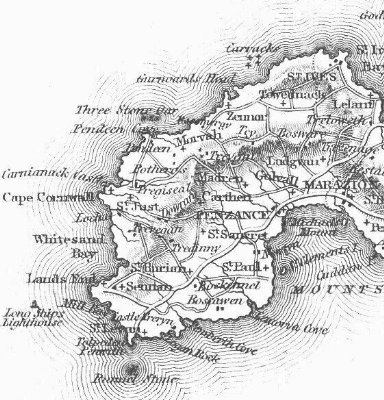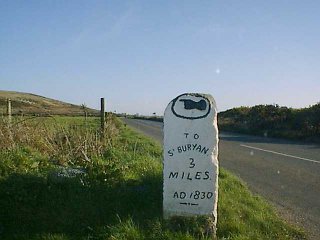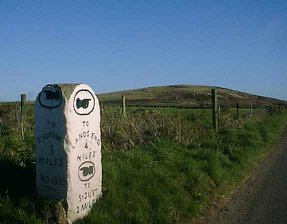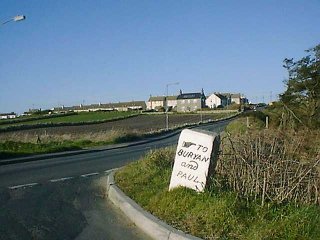
Antiquities of the Lands End District of Cornwall, at the Western Extremity of the British Isles

From a Map of 1831
By far the greatest number of landmarks in this small area are wayside and other crosses. Although bearing an obvious Christian interpretation, it is possible that these antiquities could be far older. Few or none can be dated with certainty, as although nearly all are round-headed, it is quite possible that crosses were inscribed upon them at a later date than their foundation, at a time when the church was making its influence strongly felt in the area in the sixth and seventh centuries of the present era.
Yet even though the apparent Christian influence is strong, it has a curiousity and mystery all of its own. The local "saints" and some of the churches whose names they carry have names which are unknown outside of a very small part of the Celtic lands which are associated with West Cornwall, particularly Ireland and Brittany. As an example, there is the parish and church of St. Buryan, supposedly named after a female Irish saint who established a home there. Yet some local people still refer to the village as simply "Buryan" [pronounced "Burrian"] and there is even an early 19th stone signpost which lacks the saint's name.
The crosses, too, are unique to the Celtic areas of Britain, and Cornwall, like Ireland, Scotland and Wales, was once a nation in its own right, with its own language - a language even today being revived. Cornwall may officially be part of England, but to an increasing number of people, it remains a land with its own unique identity and culture, and even its own national flag of St. Piran, a white cross on a black ground. More is revealed ... follow the links at the bottom of the page.Signposts ...
On the road to Lands End from St. Just, the left hand picture leads to the A30 junction at Crows an Wra. The other, as indicated, leads to Lands End via Sennen, or St. Just - choose your own finger!




This milestone leads to St. Buryan from Sennen, which is the nearest village to Lands End itself. Note that the "St." is missing for St. Buryan, which was, it seems, not always sainted in times past .... Rumour has it that it still lacks a little perfection.
The maps call it part of England, but those who live here may see it differently
I've only been here since 1996. To me, among others, it is its own country - the rocks, the cliffs, the coves and ancient monuments all declare it.